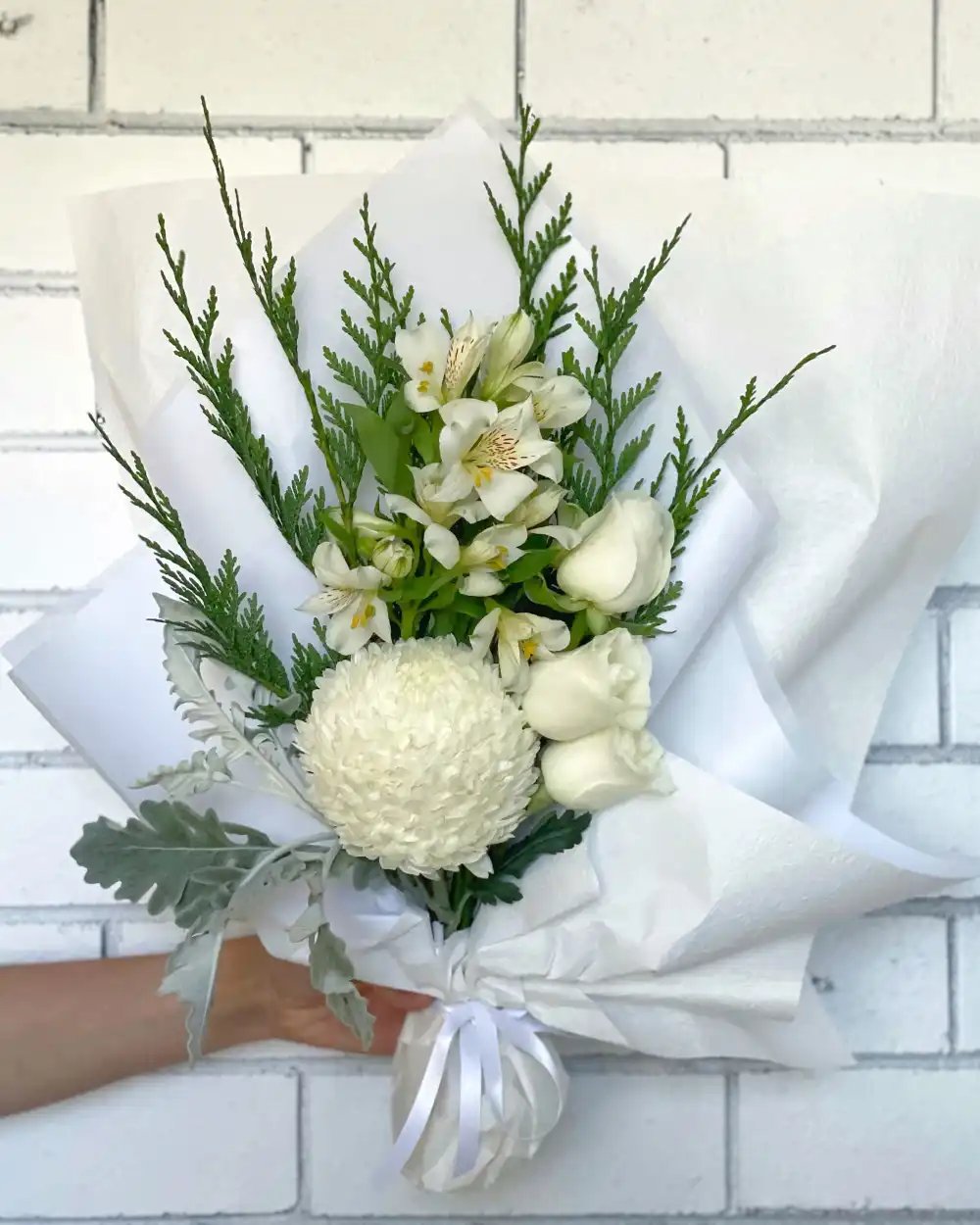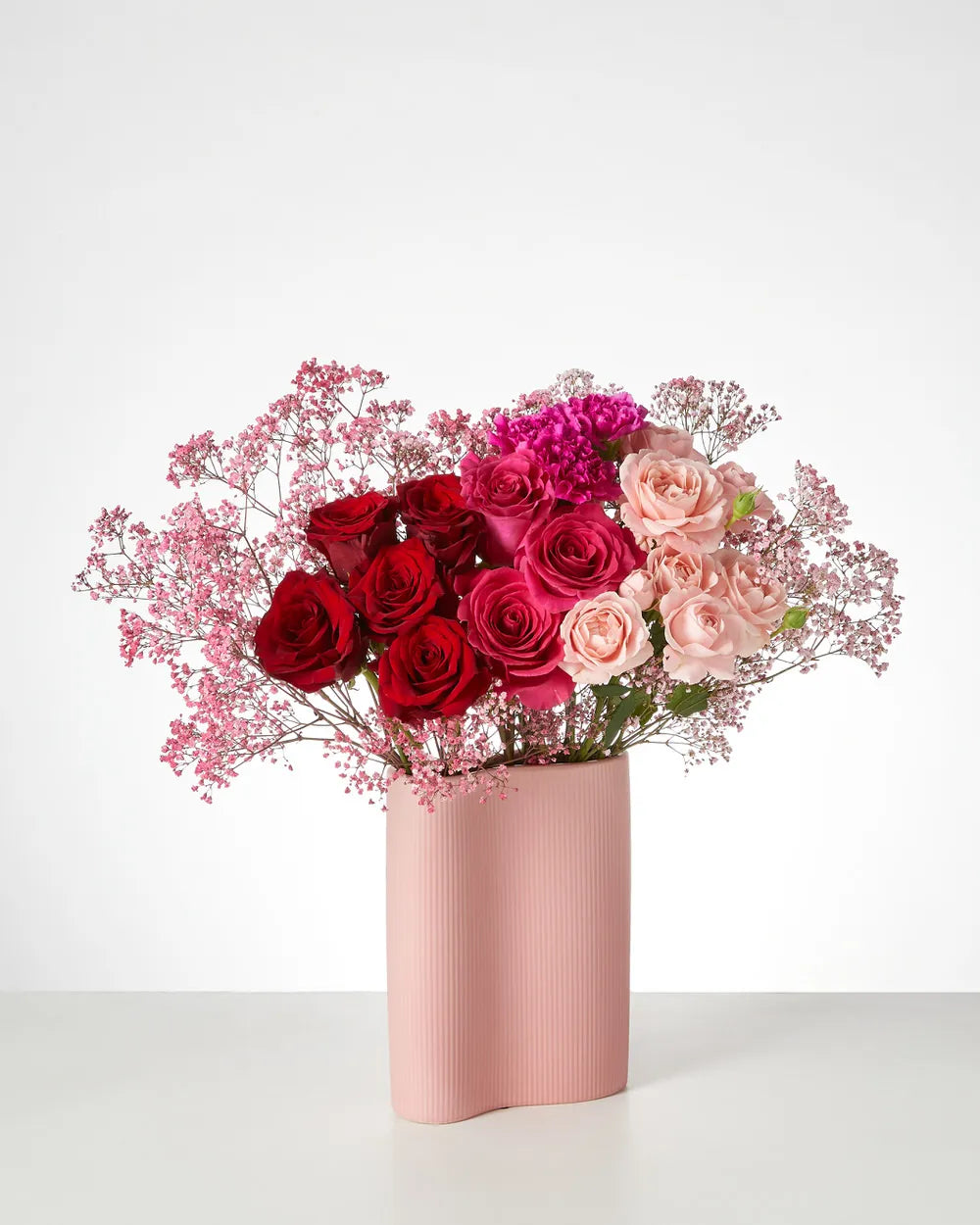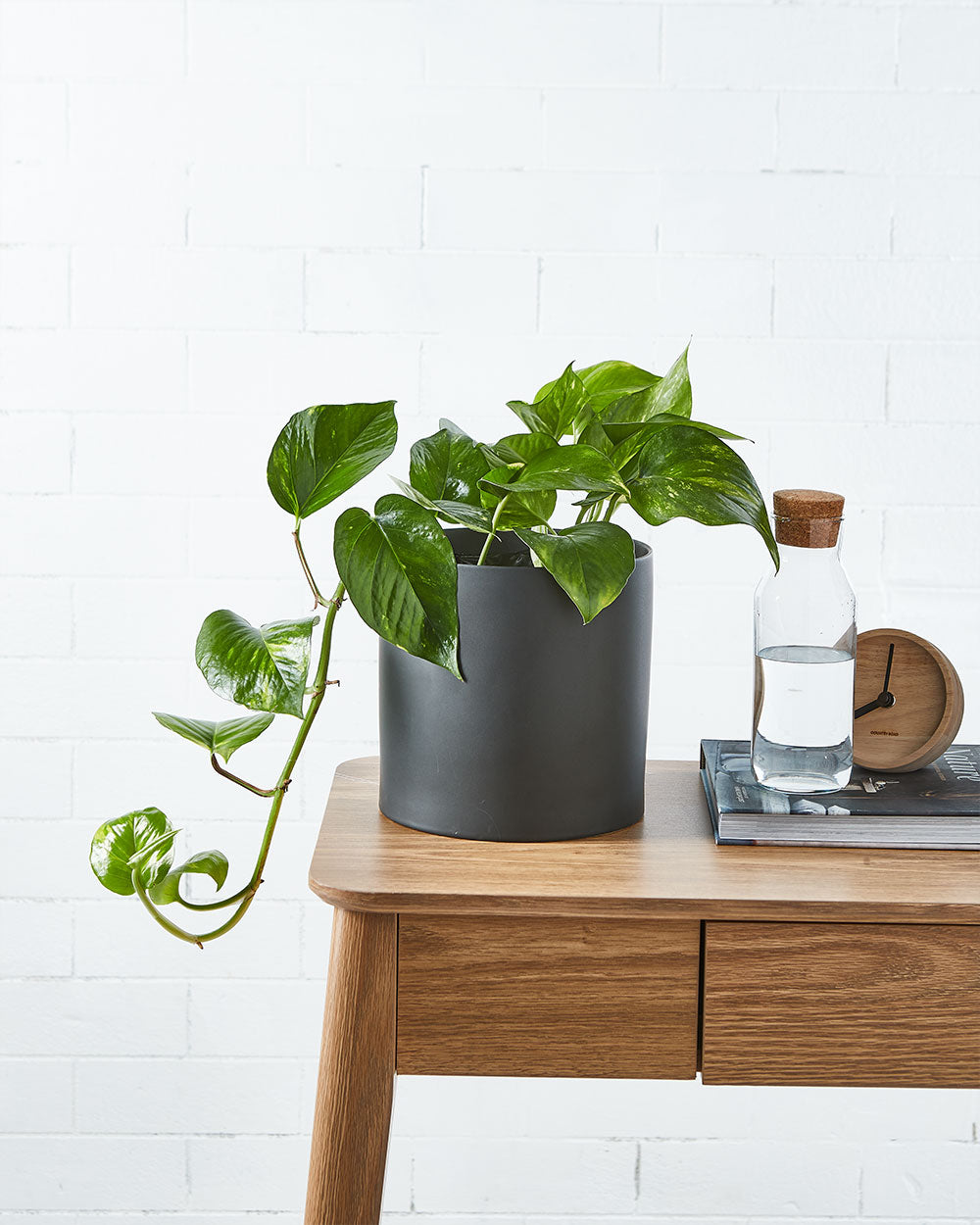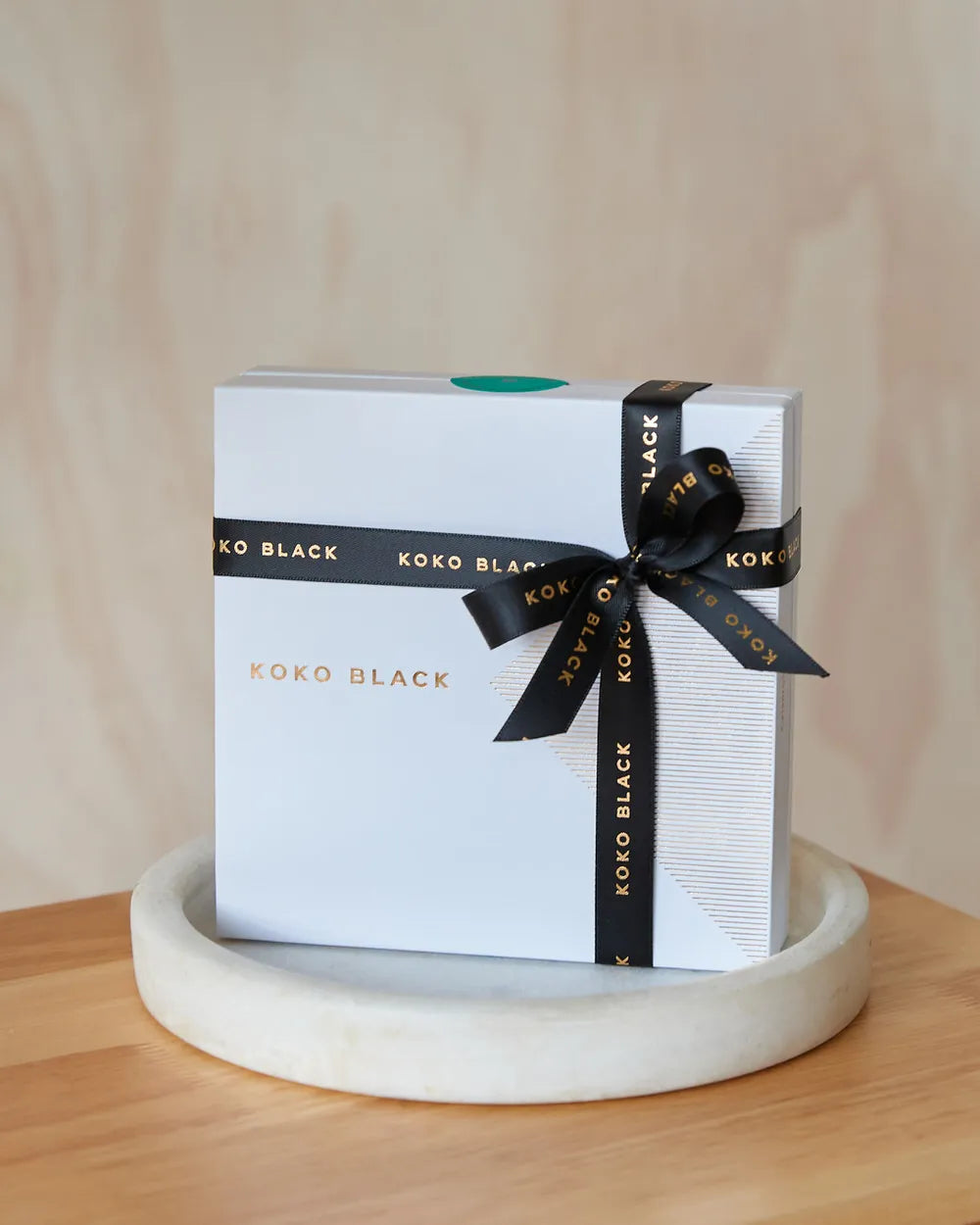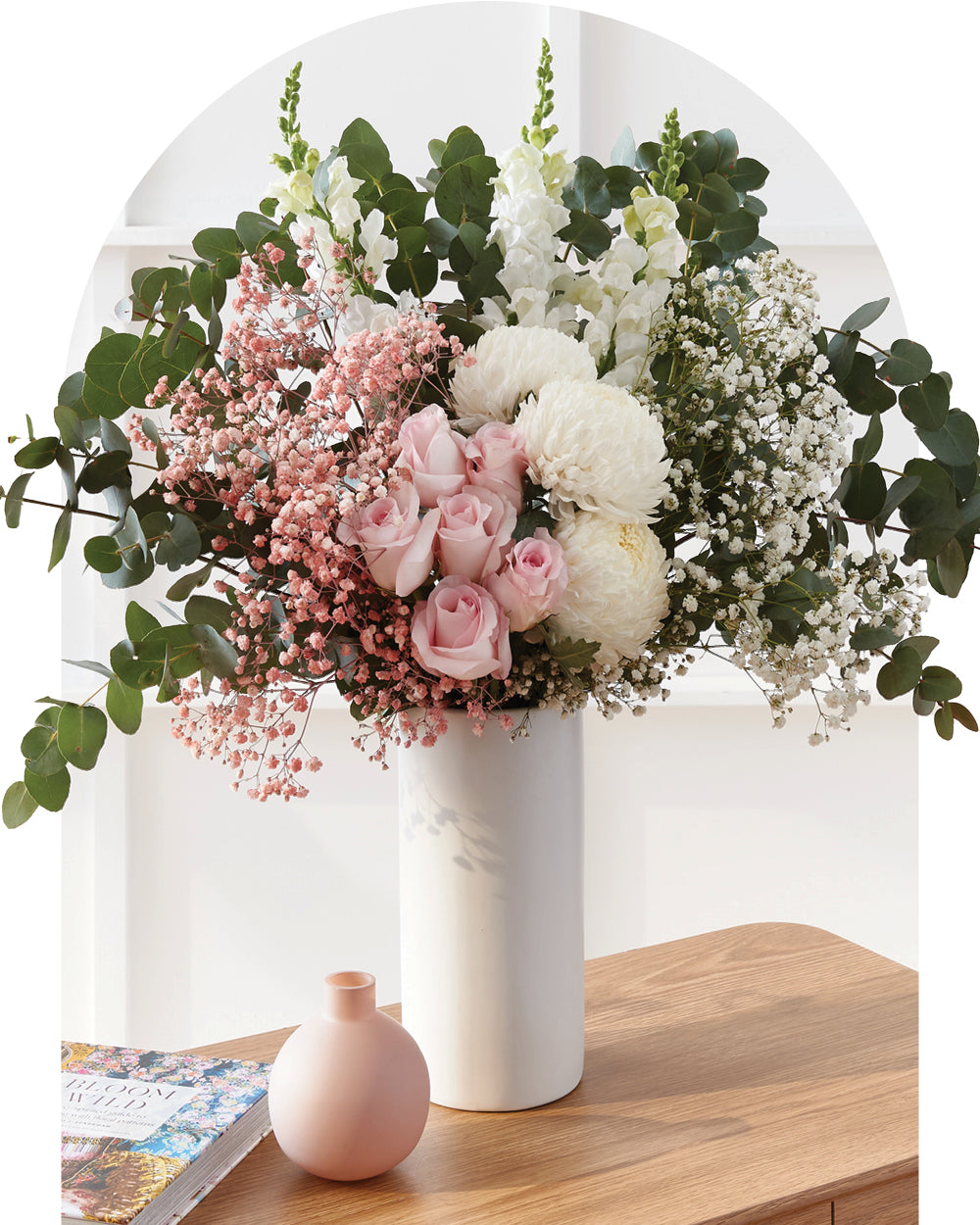Rubber plants, or ficus elastica (if you want to sound like a natural plant fundi), bring sophistication and charm to any home or office space. Since these plants are so easy to care for, they are also the perfect choice for anyone embarking on their first green-finger journey. Keep reading for all rubber plant care tips you need to know. Traditionally hailing from Asia with strong ties to Malaysia, Java, and India, these medium-sized plants can grow to great heights if they are happy in their environment. In the wild, they grow into large trees characterized by numerous aerial roots. However, they also work perfectly as indoor plants, though growth will be restricted if kept in smaller pots. With ample green or burgundy leaves, rubber plants are a striking addition to any room and will certainly elevate a home’s décor with their effortless appeal. Here we explore our tried and tested tips for first-class rubber plant care. When it comes to how to care for rubber plants, we have you covered!
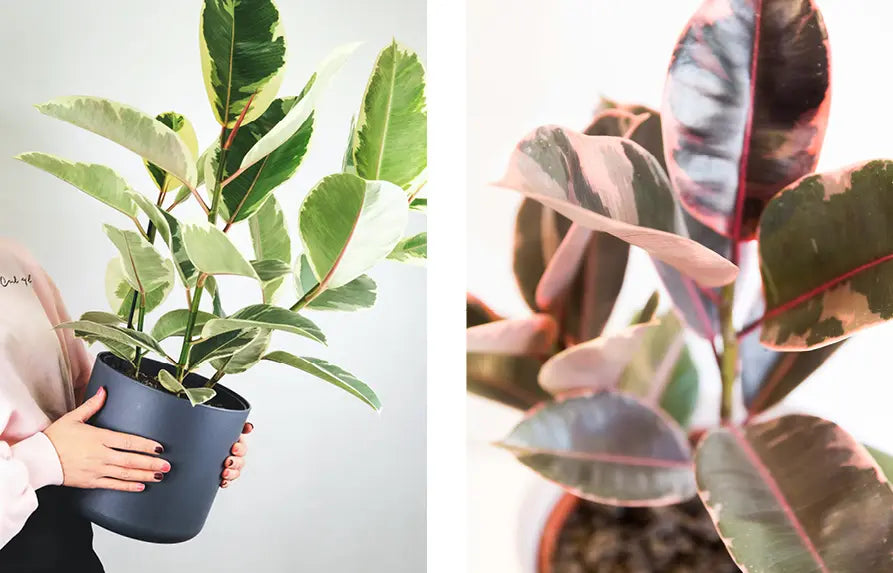
How to Care for Rubber Plants
Being a good plant parent is about learning how best to care for your plant. While some plants thrive on infrequent watering and bright light, others prefer shady corners and regular watering. Knowing what your plant needs to live its best life will ensure that you can give it the best possible care to survive and thrive. We are so passionate about showing you how to best care for your plants. By following this rubber plant care guide, you’ll have all the tips needed to keep your green friend lush and healthy.
1. How often should you water rubber plants?
While rubber plants are easy to care for, it is important not to over-water these cultivated plants. The watering needs of the ficus elastica vary depending on the season. In summer, the so-called “growing season”, they’ll need a bit more water, but in the winter season, known as the “dormant season”, they will need less. As a rule of thumb, it would be best to underwater your rubber plant rather than over-water it. Over-watering your plant can drown it and lead to root rot, which inevitably causes many problems, such as yellowing leaves that fall off. Ideally, you want to water your rubber plant every 5-7 days, but this may vary depending on the ventilation and humidity of your space. In hotter climates or during warmer summer months, plants may need more water and could be watered every five days. You can also enhance moisture retention by misting the leaves when it is very dry. Top tip: A good way to test if your plant needs watering is to check the top two inches of its soil. If they are completely dry, it is time for a watering session. When watering your plant, ensure that you give it a good drink. You want to make sure that the water reaches the roots. Be sure also to use water that’s room temperature, rather than water that’s too cold. This might shock the plant and cause drooping leaves. Fertilize your rubber plant in the growing season (summer).
2. How much light does a rubber plant need? ?
The best type of light for your rubber plant is bright, indirect sunlight. If you want to keep your ficus super happy, it is advised that you place it near a southern-facing window. You can position it behind sheer curtains for maximum happiness, as the curtains will filter out the direct sunlight and allow the rubber plant to bask in the sunshine’s brightness. Interestingly, however, the rubber plant can tolerate lower light if necessary. However, if they need more light, they will also tell you. Signs might include your plant leaning towards the source of light or drooping leaves. Top tip: Avoid placing your rubber plant near drafty windows, as this could dry out your plant.

3. What soil does my rubber plant need?
Since rubber plants don’t like too much water and especially don’t like sitting in it, you will need to find soil that drains well. You’ll need to use aerated soil, which easily circulates air and allows it to move through the soil freely. A good soil mix might include equal measures of peat, pine bark, and coarse sand (also known as perlite).
4. How often should you repot your rubber plant?
The best type of pot for your rubber plant is one that allows it a little extra room to move. These fast-growing plants will enjoy a little extra space. Ensure that your pot also has adequate drainage. This ensures the perfect environment for the roots to thrive, and in turn, they can get the most from the soil and its nutrients. You will probably need to change pots every few years if you want your plant to grow. When kept in a smaller pot, they’ll stay small, so this is mainly dependent on your preferences. As a general rule, if you want to report your rubber plant, choose a pot that is about 1-inch larger. One tell-tale sign that your rubber plant needs a new pot palace includes roots going peek-a-boo! If you see them crawling out the plant, peeping through the drainage hole, or pressing against the side of your pot, you need a bigger pot.

5. Are rubber plants toxic to cats or dogs?
Happily, the rubber plant isn’t highly toxic for our furry friends. In certain instances, the leaves can release sap, and this could cause gastrointestinal issues to animals. Nonetheless, it’s best to keep them out of their way, especially if they seem curious about your rubber plant. Luckily, you can deter your pets using natural methods. To discourage cats from your rubber plant, pop some lemon rind in the plant, and to deter dogs, sprinkle a little cayenne pepper at the tree’s base.
6. What are common problems?
While these plants are relatively low maintenance, you might encounter a few problems if they are unhappy. Two common issues include: Yellow leaves: Overwatering, which leads to root rot. Ensure your plant can drain adequately and limit watering to weekly intervals or when 2-inches of the topsoil is dry. Drooping leaves: Usually caused by dry air, fix it with a humidifier and mist the leaves. Reassuringly, these two problems can be fixed with a few tweaks and by following our rubber plant care tips.

Fun Ficus Fact:
In their natural habitat, these beauties can grow up to 200 feet tall!
The Takeaway
Caring for rubber plants is an easy feat with the proper knowledge at your disposal. They make for a gorgeous addition to your office or home and come in a variety of colours and patterned varieties. Whatever rubber plant you choose, they’re bound to delight guests and dazzle any room with their elegance and style. Explore our gorgeous rubber plants here.




